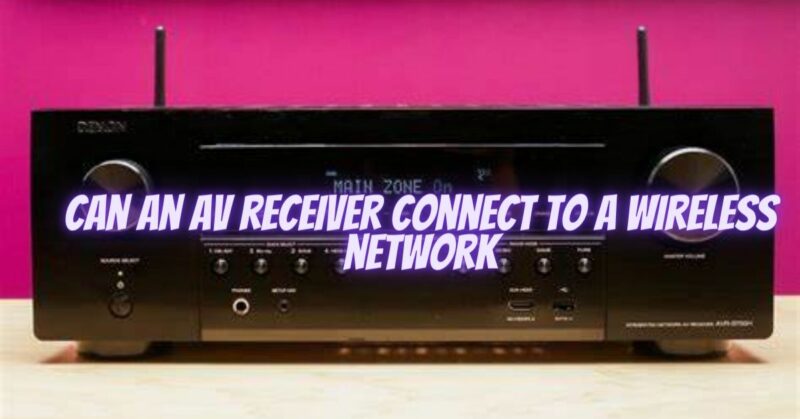In today’s interconnected world, the ability to connect devices to a wireless network is highly desirable. AV receivers, known for their audio and video processing capabilities, can also take advantage of wireless connectivity to enhance your home theater experience. In this article, we will explore the capabilities of AV receivers to connect to a wireless network, the benefits it offers, and how it can expand your audio and video streaming options.
Wireless Network Connectivity with an AV Receiver:
- Built-in Wi-Fi or Wi-Fi Adapter: Many modern AV receivers are equipped with built-in Wi-Fi capabilities, allowing them to connect directly to your wireless network. These receivers have Wi-Fi antennas integrated into their design, enabling seamless wireless connectivity. If your AV receiver does not have built-in Wi-Fi, some models offer the option to connect a Wi-Fi adapter (sold separately) to enable wireless network connectivity.
- Network-Enabled Features: By connecting your AV receiver to a wireless network, you gain access to various network-enabled features. These include firmware updates, streaming services, internet radio, podcast apps, and networked media playback. With a wireless connection, you can easily access and enjoy a wide range of digital content and streaming services without the need for additional devices.
- Audio and Video Streaming: Wireless network connectivity allows you to stream audio and video content directly to your AV receiver. By connecting your receiver to the network, you can use streaming services like Spotify, Pandora, TIDAL, or Apple Music to play music through your home theater system. Additionally, you can access streaming platforms like Netflix, Amazon Prime Video, or YouTube to enjoy movies, TV shows, and online content directly on your TV.
- Multi-Room Audio: Wireless network connectivity enables multi-room audio functionality. Some AV receivers support wireless audio distribution protocols, such as AirPlay, Chromecast, or DTS Play-Fi. With these features, you can synchronize audio playback across multiple rooms, allowing you to enjoy music or other audio content throughout your home, controlled from a single device.
- Control and Integration: Connecting your AV receiver to a wireless network opens up control and integration possibilities. Many receivers offer companion mobile apps that allow you to control various functions, such as volume adjustment, source selection, and streaming service management, from your smartphone or tablet. Wireless network connectivity also facilitates integration with voice assistants like Amazon Alexa or Google Assistant, enabling voice control of your AV receiver and connected devices.
- Firmware Updates: Wireless network connectivity ensures that your AV receiver remains up to date with the latest features, bug fixes, and improvements. Manufacturers release firmware updates to enhance performance, add new functionalities, or address compatibility issues. By connecting your receiver to the wireless network, you can easily download and install firmware updates directly from the manufacturer, ensuring your AV receiver stays current.
Conclusion: Connecting an AV receiver to a wireless network brings numerous benefits and expanded functionality to your home theater setup. By leveraging wireless network connectivity, you can stream audio and video content, access online streaming services, enjoy multi-room audio, and control your AV receiver seamlessly. Take advantage of the built-in Wi-Fi or Wi-Fi adapter options in your AV receiver, connect it to your wireless network, and unlock a world of entertainment and convenience in your home theater system.


